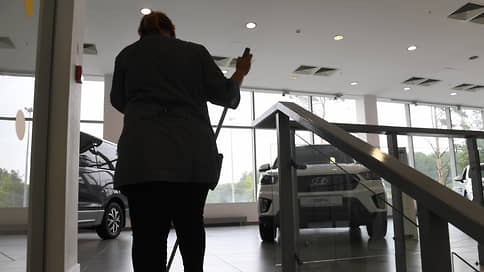Korean cars slowed down – Newspaper Kommersant No. 173 (7374) of 09/20/2022
[ad_1]

The import of cars from Korea to Russia continued to recover at the end of the summer – the volume of deliveries in August reached almost $66 million. However, the growth rate slowed down: analysts believe that the reason was the consistently low level of effective demand for cars in Russia. Korean imports are not only official deliveries of Kia and Hyundai, but also shipments to individuals.
Imports of finished passenger cars from South Korea to Russia were recovering throughout the summer months and in August reached 4.5 thousand tons, or $65.9 million. In monetary terms, this is 11% higher than shipments in the previous month (3.7 thousand tons, or $59.4 million), as well as almost three times more than in March, when the supply of goods to the Russian Federation was just beginning to sag after the outbreak of hostilities in Ukraine.
Sergey Udalov from Avtostat notes that now Korea has become a popular channel for the import of cars into the Russian Federation, including by individuals – both relatively new and used cars. It should be noted that the customs statistics of Korea does not allow distinguishing new and used cars in the total mass of shipments. “It turns out to be more interesting in terms of price than similar offers in Russia, but for individuals, the most favorable duties are on cars aged three to five years,” the analyst continues, noting that some part of the shipments, of course, falls on official Kia deliveries. and Hyundai.
Recall that Kia received vehicle type approval (OTTS) in March for the Soul, Mohave, Stringer and K5 models, in May for the South Korean Sorento and Seltos, in July for the Cerato and Forte models, in August for the new EV6 model. . However, this in practice does not mean the start of sales. Hyundai, in turn, has certified the Genesis G70 and GV80, as well as the Korean-built Hyundai Santa Fe.
All these cars were previously produced at the Kaliningrad Avtotor. Now the parties do not comment on the production in the Russian Federation. Customs statistics on shipments of spare parts and components from Korea to Russia – among which, for example, brakes, clutches, and others – do not allow us to single out components for industrial assembly. But in general, shipments of spare parts in monetary terms have not yet reached even the level of March, amounting to $24.2 million (3.3 thousand tons) excluding electronics. Kommersant’s interlocutors said that Hyundai and Kia have been supplying spare parts to the Russian Federation by rail since May, but none of them heard about shipments to the conveyor.
Sergei Udalov notes that deliveries of both cars and spare parts, first by ferry and then by rail from the Far East, are partially limited by the capacity of the route. In addition, as part of the unofficial import of cars from Korea, including by individuals, prices are only slightly lower than for the same cars from dealers in the Russian Federation, since sellers include their margin in the cost: “As a result, prices did not drop sharply, which at the current purchasing power also limits demand.
The fact that the Russian market is probably unable to provide significant demand for at least new cars was also evidenced by the stable deliveries of finished cars from China to the Russian Federation in recent months – by $ 31–33 million. Moreover, this volume is lower than in spring, but, Judging by Autonews estimates, the warehouses of key Chinese brands have not been significantly emptied and are even replenished – a similar situation with Korean brands.
The Russian car market in the last month of summer grew from 35.6 thousand to 42.6 thousand new cars, with mileage – dipped from 430 thousand cars to 392 thousand units, according to Avtostat. Demand for new cars will remain at the same level: 40-45 thousand cars per month and beyond, Sergei Udalov believes. AEB statistics are slightly different: they estimated the market for passenger cars and light commercial vehicles in August at 41.7 thousand cars. At the same time, Korean brands still remain among the leaders in sales of foreign cars, although they are beginning to be squeezed by brands from China.
[ad_2]
Source link





